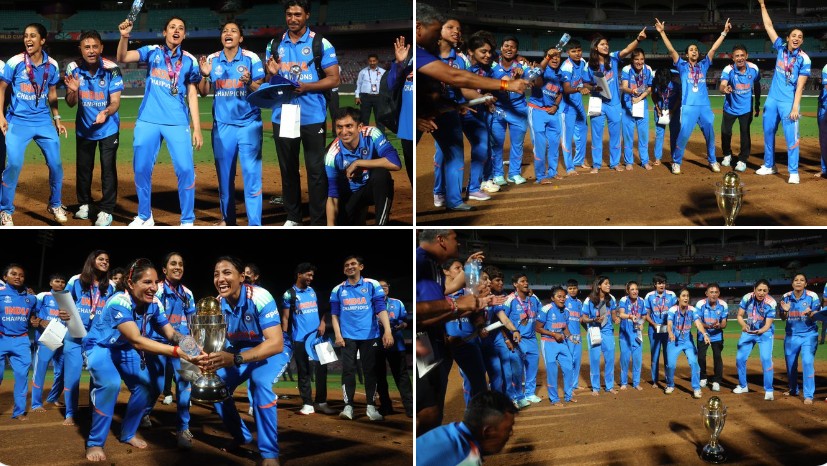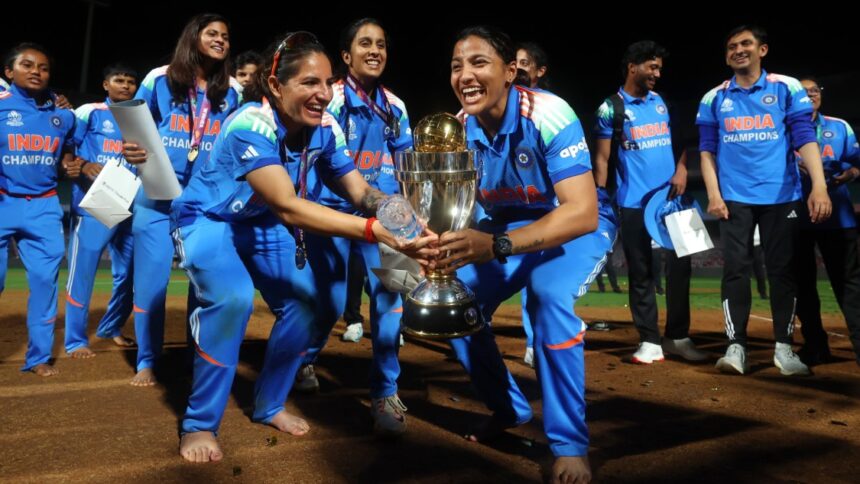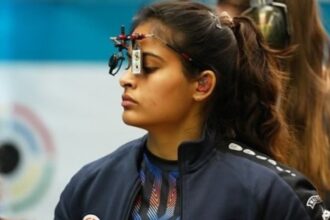Navi Mumbai, November 3: CWC25: India scripted history on Sunday as Harmanpreet Kaur’s team defeated South Africa by 52 runs in the grand finale of the ICC Women’s ODI World Cup 2025 at the DY Patil Stadium, Navi Mumbai. The win handed India their first-ever Women’s ODI World Cup title, marking a watershed moment in Indian cricket.
After being asked to bat first, India posted a competitive 298 for 7 in 50 overs, riding on fluent half-centuries from Shafali Verma (87) and Deepti Sharma (58). The total proved more than enough as the Indian bowlers, backed by sharp fielding and inspired captaincy, bundled out South Africa for 246 runs.
With this triumph, India became the fourth nation after Australia, England, and New Zealand to lift the coveted CWC trophy.
Historic prize pool and record rewards: Harmanpreet’s India Wins First World Cup, BCCI Announces ₹51 Crore Bonus
The 2025 Women’s World Cup carried a total prize purse of USD 13.88 million (₹123 crore) — nearly four times higher than the 2022 edition held in New Zealand. The amount also surpassed the prize pool of the 2023 Men’s World Cup (USD 10 million), highlighting the rapid growth and recognition of women’s cricket globally.
As champions, of CWC 25 India will receive USD 4.48 million (₹40 crore), while runners-up South Africa will take home USD 2.24 million (₹20 crore). The two losing semifinalists, Australia and England, will earn USD 1.12 million (₹10 crore) each.
Back home, celebrations erupted across India as BCCI Secretary Devajit Saikia announced an additional ₹51 crore reward for the Indian team and support staff. “This victory will take Indian women’s cricket to a new level,” Saikia said, calling it a defining achievement for the sport.
IPL Chairman Arun Dhumal compared the win to India’s iconic 1983 Men’s World Cup triumph, saying, “It’s a red-letter day for Indian women’s cricket. What the men achieved in 1983, the women have recreated today in Mumbai. This historic moment will inspire generations and elevate the game to new heights.”
India’s journey: from early setbacks to ultimate glory at CWC25

India’s 2025 World Cup campaign was one of resilience and redemption. After losing three consecutive group-stage matches, the team staged a remarkable turnaround, winning every knockout game en route to the title.
At the heart of India’s final victory was Shafali Verma, who not only anchored the innings with a blistering 87 but also produced a stunning spell with the ball when the match hung in balance.
An inspired bowling change from captain Harmanpreet Kaur saw Shafali dismiss South Africa’s Sune Luus and Marizanne Kapp within seven balls, a moment that shifted the contest firmly in India’s favor.
“It felt like her day,” Harmanpreet said after the match. “She played fearlessly, and that energy lifted the entire team.” Shafali’s all-round performance earned her the Player of the Match award.
A defining moment: Amanjot’s catch that sealed history
With South Africa’s captain Laura Wolvaardt looking in ominous touch, having already scored a century in the semifinal against England, India faced tense moments as she approached another hundred in the final.
Needing 78 runs with Wolvaardt well set, the pressure was mounting. She attempted to clear long-on off Deepti Sharma, but Amanjot Kaur, a 25-year-old all-rounder from Punjab, sprinted in, juggled the ball twice, and finally held on to a tumbling catch.
The stadium erupted as Wolvaardt walked back, signaling India’s imminent victory. Amanjot’s catch became the defining image of India’s campaign, a moment of composure that turned dreams into history.
A new dawn for Indian women’s cricket
As fireworks lit up the Mumbai skyline, the significance of the moment was clear. India’s first Women’s World Cup title wasn’t just a sporting triumph, it was the culmination of years of progress, investment, and belief.
The win promises to usher in a new era for women’s cricket in India, potentially leading to increased sponsorship, stronger grassroots programs, and greater visibility for domestic tournaments like the Women’s Premier League (WPL).
For millions of fans across the country, the final wasn’t just a match, it was a statement that India’s women now stand shoulder to shoulder with their male counterparts in global cricket.






